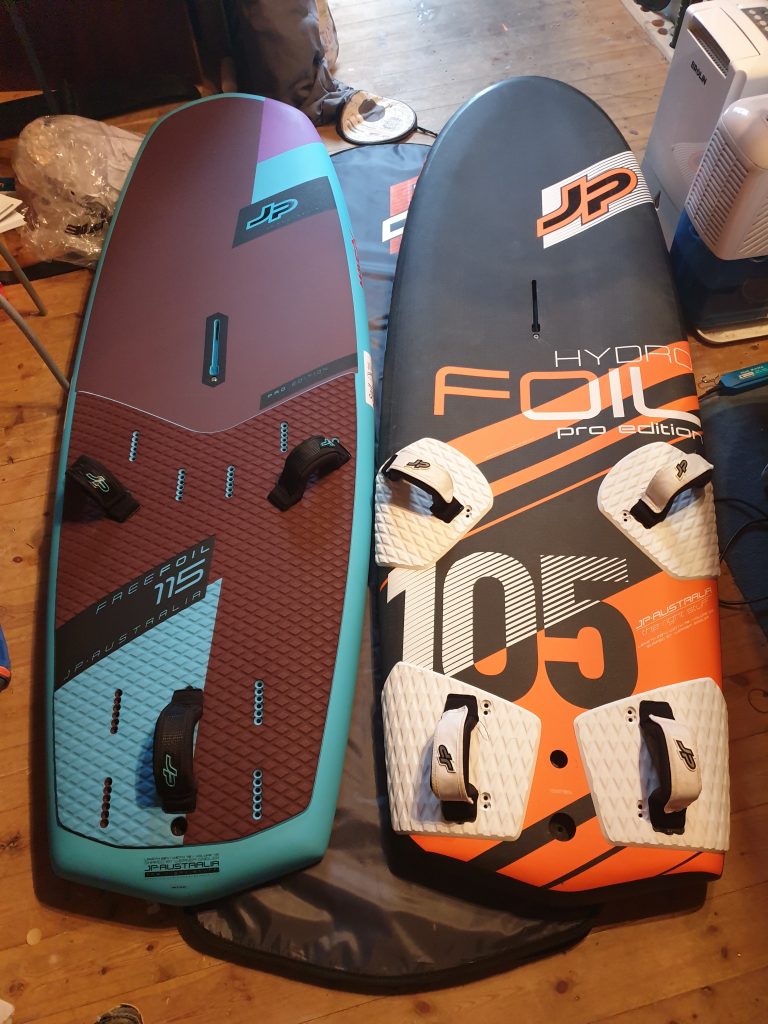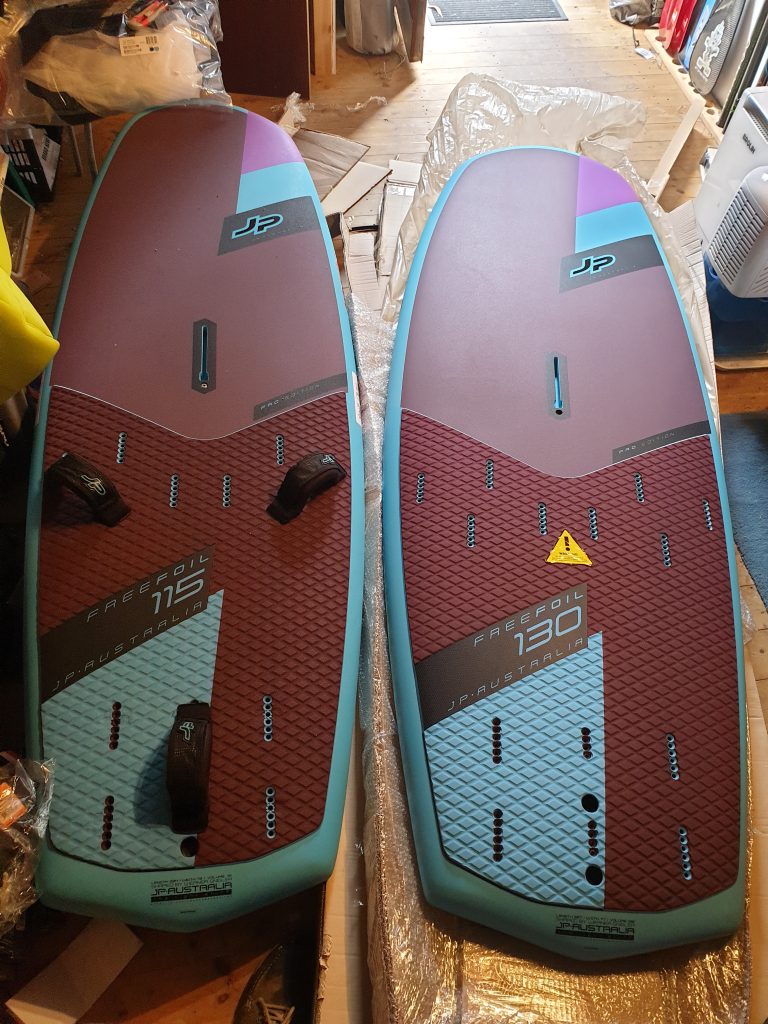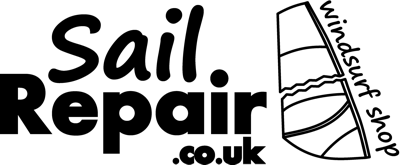With JP having two ranges of dedicated wind foil boards some people may wonder which to range to go for. The 130 freefoil has a similar width and length to the 120 Hydrofoil and the 115 freefoil has the same length and width as the now discontinued hydrofoil 105. This comparison is drawn on the 105 hydrofoil vs the 115 freefoil.
First impressions- While the boards have similar widths and lengths the outlines are quite different with the hydrofoil boards having much wider tails and the volume placement further aft to match. Like for like the freefoil boards are a bit heavier due to the additional foil tracks. The deck shape on the freefoil is an average domed shape and lacks the concave around the mast foot as seen on the hydrofoil boards. The hydrofoil boards feature bevels on the underside to prevent sticking on touch down while the freefoil utilises rail shape to do the same job. The freefoil has more footstrap positions and includes the option of a single back strap. The mast track is further back on the freefoil boards.

On the water – Straight away you notice the difference in the volume distribution between the two boards. The hydrofoil has all the volume at the back of the board and on the small 105 version it is a brave person who risks putting a foot in front of the mast foot. On the freefoil the volume is much more centered and the board is easier to uphaul and a conventional uphaul stance can be used.
Getting flying – I am used to using dedicated foil boards so I naturally move back on the boards and get my front foot in the strap and then slide my back foot back as I pump. This technique works well on the hydrofoil but if I move back too early on the freefoil it tends to drag its tail a bit. This would be less of an issue for lighter riders (I am 95kg). This is where a lower aspect early lifting foil would also help. Don’t get me wrong the freefoil will fly early but not quite as early as the hydrofoil boards. Both boards are capable performers on the hydrofoil in a given wind you might use a 6.0 and a high aspect foil while in the same wind a 5.5 sail and lower aspect foil would probably be ideal.
In flight – Both boards ranges provide comfortable flights. On the freefoil you are standing closer to the rig than on the hydrofoil. You can therefore distance yourself from the rig a bit easier on the hydrofoil and therefore take more rig power, so on the freefoil you may change down sails a bit earlier. The single back strap option of the freefoil board appealed to me but in the end I preferred the double back straps.
Gybeing – While both ranges gybe well I actually preferred the hydrofoil boards for gybeing for two reasons, firstly the wider tail area gives you more working deck space to stumble about on mid gybe and secondly the additional foil tracks do add extra weight that at times I could feel pulling the board down mid gybe
Overall – There is no better or worse board here, both boards do what they claim. If you want to go fast on a foil then the hydrofoil boards have a definite edge. But for versatility the freefoil boards can take a wider range of foils and also offer the option of using a wing rather than a sail although you would need an additional foil to be able to do both sports.
Which is easier as a first foil board? If you are coming from a wave sailing background then you will feel more at home on the freefoil but if you are used to freerace or slalom boards then the hydrofoil would probably suit you best.

